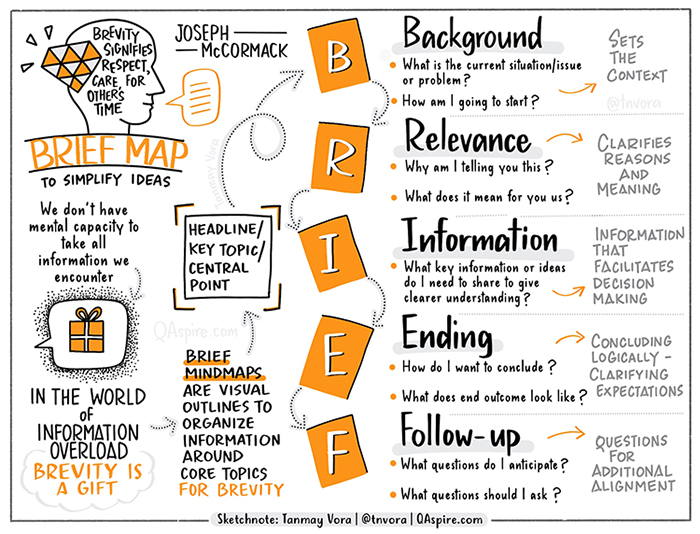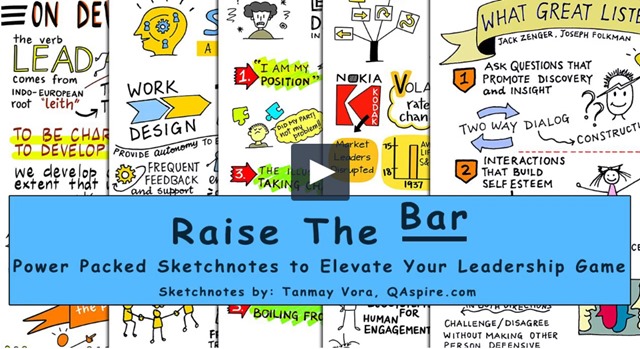How to Communicate with Brevity
We live in a world of information overload. In such a world, communicating with brevity is a gift to others.
Tanmay Vora
Over-explanation, too much of context setting and long meetings indicate lack of preparation before communication. For many of us, it is difficult to be brief when we write or talk. Long winded and unfocused conversations in meetings is a waste that costs us our focus and productivity.
Being brief when communicating is a sign of respect for the other person’s time. In the world of information overload, brevity is a gift.
In this context, I read Joseph McCormack’s book “Brief: Make a Bigger Impact by Saying Less” in 2018 for two reasons – I am passionate about improving communication in organizations and I aim for simplicity in my own expression. The book offered reasons why we fail to keep our communication short and some tools to enable brevity.
Why is it important to be BRIEF?
Our attention is challenged. All the well-intentioned tools that connect us with family and friends, build communities and help us get the work done are the same tools that rob us of our attention. In work context, being brief without losing the essence can be a great service to others.
Obstacles to Brevity
The author outlines unconscious biases that pull us into long-winded conversations:
- We love hearing our own voice and that makes it hard to be brief.
- Expertise can lead you into technicalities and over-detailed explanations.
- When we are too comfortable in the context/company, it is easy to go off the topic. The author says that feeling at ease makes us talk too much.
- Not organizing thoughts before speaking can lead us to think aloud. When we think and speak at the same time trying to make sense of the topic ourselves, the audience receive blurred and incomprehensible messages.
Using BRIEF Maps to organize for Brevity
When leading large team of nearly 600 people back in time, communication was my key focus area since my job was to help people do better, create strong teams, ensure strategic alignment, build a strong culture and foster a sense of purpose amongst different functional teams.
BRIEF Maps outlined in the book served me really well in organizing my thoughts before any predetermined communication opportunity.
BRIEF stands for Background, Reasons or Relevance, Information for Inclusion, Ending, Follow-up Questions/Thoughts. Thinking about some of these aspects and having my thoughts written down in a notepad/card helped me structure my communication better.
Since the model helped me, I created a sketchnote version that can be used as a quick reference/tool. The book is a recommended read for some of these tools that it offers.

My Pursuit of Brevity
- In 2009, I wrote my first book titled #QUALITYtweet where each chapter was 140-characters long (the Twitter constraint at that time) and book had 140 such chapters. Writing the book challenged me to express the core idea in least possible words. Each tweet had to be provocative enough to lead the reader to think laterally. For those reasons, the book was very well received.
- In 2012, I experimented with writing 100-word posts and stories. This experiment further helped me with brevity without losing the substance of the story or idea.
- Finally, I stumbled upon sketchnotes in 2015 which was an experiment in visual brevity. Each sketchnote had to capture the essence of the idea with minimal visuals and words.
The point of these experiments was to build the muscle of brevity for better communication, engagement and impact in all spheres of life.
Updated: Visual Leadership Pack of 65+ HD Sketchnotes
If you liked the sketchnote summary above, check out the Visual Leadership Pack of HD Sketchnotes – a compilation of high-resolution sketchnotes with 68+ powerful (and timeless) ideas to elevate your leadership and learning game.

Very good and relevant article, Tanmay Vora. As you wrote, in world of data overload and high attention demand, briefing skill isa gift.
I’m a great enthusiast of your LinkedIn posts (you may have noticed).
It’s a bit long.
Richard Fisher
Brief Communications Officer
brevityco.ca
Good stuff! Though, in my opinion, the best practice is to lead with the Relevance step. For very busy people it’s best to let them know in the first sentence or 2 why they should care about what you’re writing as well as what you are asking them to do with/about it.